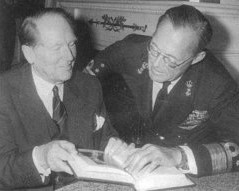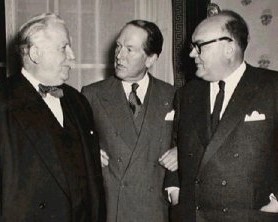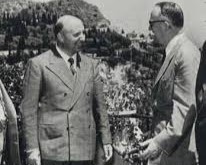Full name:
Johan Willem (Wim) Beyen

"A plan for a common market"
Johan Willem (Wim) Beyen
2 May 1897, Utrecht, Netherlands
29 April 1976 (aged 78), The Hague, Netherlands
- Johan Willem Beyen

Wim Beyen presented his memoirs Het spel en de knikkers to Prince Bernhard (Prince of Netherlands), 1968

(left to right) The ministers Bech (Luxembourg), Beyen (Netherlands) and Paul-Henri Spaak (Belgium)

Beyen at the Messina Conference, where he introduced his plan for economic cooperation in Europe